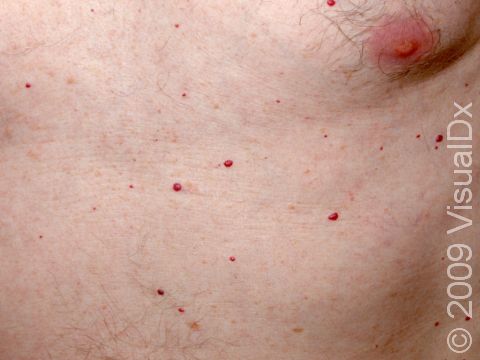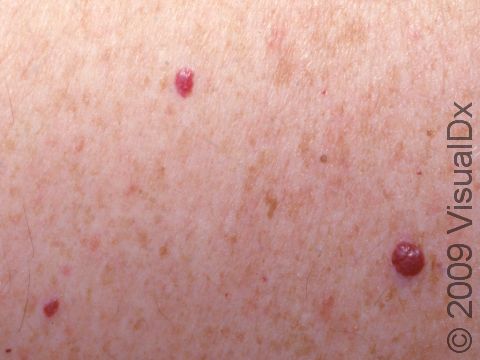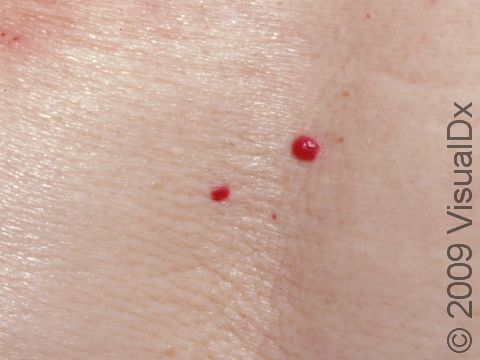Cherry Hemangioma
A cherry hemangioma is a small non-cancerous, red-purple bump on the skin that is typically seen in older adults. It is formed from an overgrowth of small veins.
Who's At Risk?
Cherry hemangiomas are found in individuals of all races and ethnic backgrounds. They occur more frequently with increasing age.
Signs & Symptoms
Cherry hemangiomas may be found on any body location. They range from a small, red, flat dot to a larger, round-topped, bright-cherry-red bump. Sometimes cherry hemangiomas are more purple than red in color. Rarely, a cherry hemangioma lesion demonstrates a dark brown to an almost black color.
Self-Care Guidelines
No self-care is needed except avoiding trauma, which may cause bleeding of the lesions.
Treatments
Lesions may be surgically removed by cutting away the area (excision), burning away the area (electrocautery), laser, or freezing the area (cryosurgery).
Visit Urgency
Cherry hemangiomas typically require no treatment, although lesions that are irritated or bleeding (most commonly occurring due to injury) usually require removal. Cherry hemangioma lesions can also be removed if they are cosmetically undesirable.
Trusted Links
References
Bolognia, Jean L., ed. Dermatology, pp. 1824-1825. New York: Mosby, 2003.
Wolff, Klaus, ed. Fitzpatrick’s Dermatology in General Medicine. 7th ed, p. 2272. New York: McGraw-Hill, 2008.
Last modified on October 5th, 2022 at 7:10 pm

Not sure what to look for?
Try our new Rash and Skin Condition Finder


